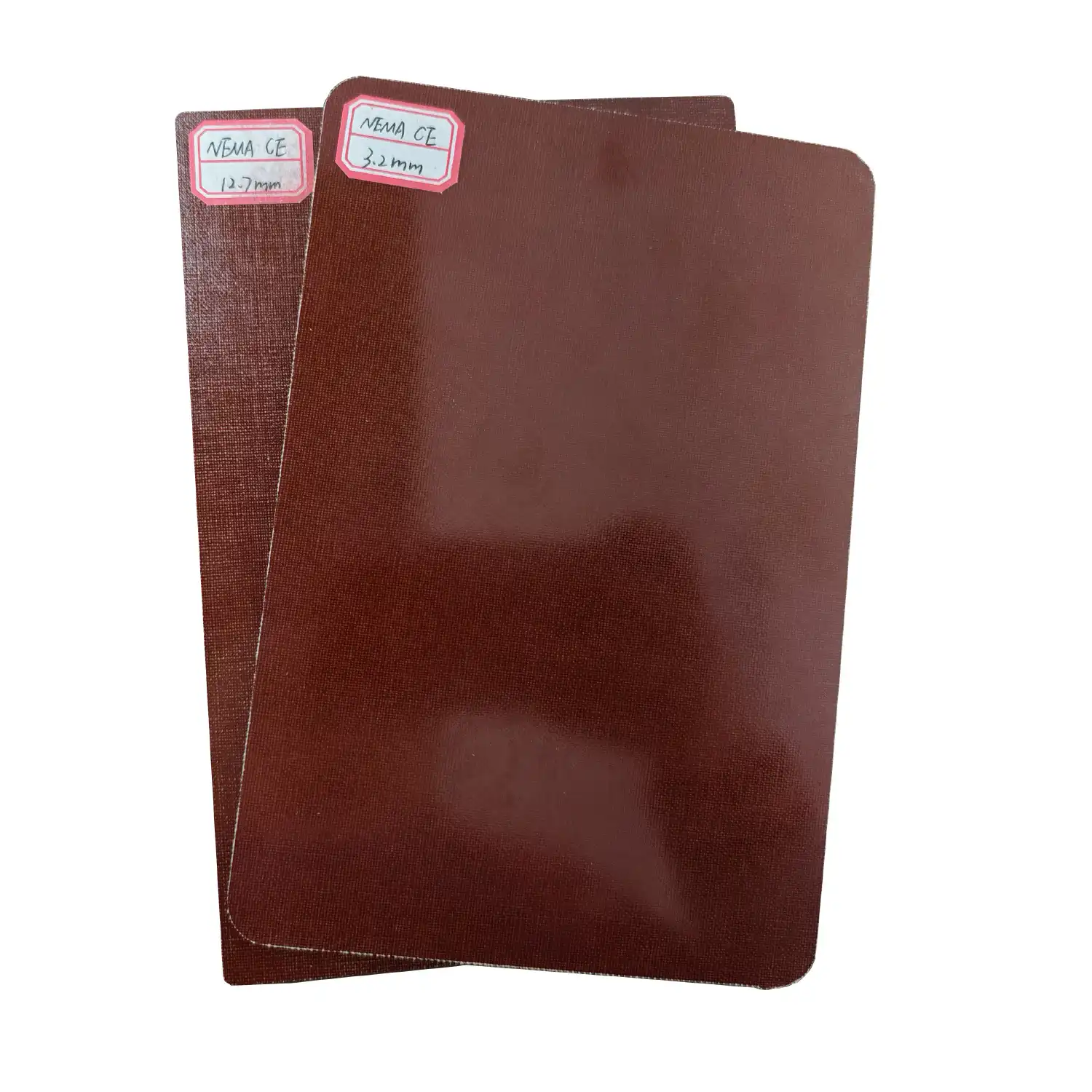The Rise of CE Phenolic Sheets in Modern Machinery
Understanding CE Phenolic Sheets
CE phenolic sheets are advanced composite materials that combine the strength of fiberglass with the thermal and electrical insulation properties of phenolic resins. These sheets are manufactured through a complex process involving heat and pressure, resulting in a material that boasts remarkable durability, heat resistance, and dimensional stability. The "CE" designation indicates compliance with European safety standards, ensuring these materials meet rigorous quality and safety requirements.
Key Properties Driving Innovation
The adoption of CE phenolic sheets in machinery components is driven by their unique combination of properties. These include exceptional mechanical strength, low thermal conductivity, excellent electrical insulation, fire resistance, and chemical inertness. Such a diverse range of attributes makes CE phenolic sheets versatile enough to replace traditional materials in numerous applications, often with significant improvements in performance and longevity.
Environmental Impact and Sustainability
As industries worldwide pivot towards more sustainable practices, CE phenolic sheets are gaining attention for their environmental benefits. These materials often have a longer lifespan than traditional alternatives, reducing the need for frequent replacements. Additionally, their lightweight nature contributes to improved fuel efficiency in transportation applications. Many CE phenolic sheet formulations are also designed with recyclability in mind, aligning with circular economy principles and reducing overall environmental impact.
Transformative Applications across Industries
Aerospace: Pushing the Boundaries of Flight
In the aerospace industry, where every gram matters, CE phenolic sheets are revolutionizing aircraft design. These materials are being used in interior panels, structural components, and insulation systems. Their high strength-to-weight ratio allows for lighter aircraft, translating to improved fuel efficiency and extended range. The fire-resistant properties of CE phenolic sheets also enhance safety, making them ideal for cabin interiors and cargo holds. Moreover, their thermal insulation capabilities help maintain comfortable cabin temperatures at high altitudes, contributing to passenger comfort and reducing the load on aircraft environmental control systems.
Automotive: Driving Efficiency and Safety
The automotive sector is embracing CE phenolic sheets to address challenges in vehicle design and performance. These materials are finding applications in underhood components, where their heat resistance and electrical insulation properties are invaluable. CE phenolic sheets are being used in battery insulation for electric vehicles, helping to manage thermal runaway risks and improve overall battery performance. In structural applications, these sheets contribute to vehicle lightweighting efforts, leading to improved fuel economy in traditional vehicles and extended range in electric ones. The adoption of CE phenolic components also enhances vehicle safety, as these materials can absorb and dissipate impact energy more effectively than many traditional automotive materials.
Industrial Machinery: Enhancing Durability and Performance
In the realm of industrial machinery, CE phenolic sheets are transforming equipment design and functionality. Their use in gears, bearings, and other high-wear components is extending machine lifespans and reducing maintenance requirements. The electrical insulation properties of these materials make them ideal for use in switchgear and other electrical equipment, improving safety and reliability in industrial settings. CE phenolic sheets are also being utilized in pump and compressor components, where their chemical resistance and dimensional stability under extreme conditions prove invaluable. This wide-ranging applicability is leading to more robust, efficient, and cost-effective industrial machinery across various sectors.
Future Prospects and Ongoing Innovations
Advancements in Material Science
The field of CE phenolic sheet technology is continuously evolving, with researchers and manufacturers pushing the boundaries of what's possible. Recent advancements include the development of nano-reinforced phenolic composites, which offer even greater strength and thermal resistance. There's also ongoing work on biodegradable phenolic resins, aiming to further enhance the environmental credentials of these materials. As material science progresses, we can expect to see CE phenolic sheets with tailored properties for specific applications, opening up new possibilities in machinery design and performance.
Integration with Smart Technologies
The future of CE phenolic sheets in machinery lies not just in their physical properties, but in their potential integration with smart technologies. Research is underway to develop CE phenolic composites with embedded sensors, capable of real-time monitoring of stress, temperature, and other critical parameters. This convergence of advanced materials and IoT technology could lead to self-diagnosing machinery components, predictive maintenance systems, and unprecedented levels of operational efficiency. Such smart CE phenolic components could revolutionize industries by enabling proactive maintenance, reducing downtime, and optimizing performance in real-time.
Expanding Applications in Emerging Industries
As new industries emerge and existing ones evolve, CE phenolic sheets are finding novel applications. In the rapidly growing renewable energy sector, these materials are being used in wind turbine components, solar panel frames, and energy storage systems. The space industry is exploring CE phenolic sheets for satellite components and space vehicle interiors, leveraging their lightweight and radiation-resistant properties. Even in fields like medical technology and robotics, CE phenolic sheets are opening up new possibilities for equipment design and functionality. This expanding range of applications underscores the versatility and potential of CE phenolic sheets in shaping the future of machinery across diverse sectors.
Conclusion
The integration of CE phenolic sheet components is undeniably revolutionizing the machinery landscape across multiple industries. From aerospace to automotive, and from industrial equipment to emerging technologies, these advanced materials are enabling unprecedented levels of performance, efficiency, and sustainability. As research continues and new applications emerge, CE phenolic sheets are poised to play an even more crucial role in shaping the future of machinery. Their unique combination of properties – strength, lightweight, thermal resistance, and electrical insulation – makes them invaluable in addressing the complex challenges of modern engineering and design.
Contact Us
Are you ready to revolutionize your machinery with CE phenolic sheet components? Discover how our expertise in insulating sheets can transform your products and processes. Contact us today at info@jhd-material.com to explore the possibilities and take your machinery to the next level.






